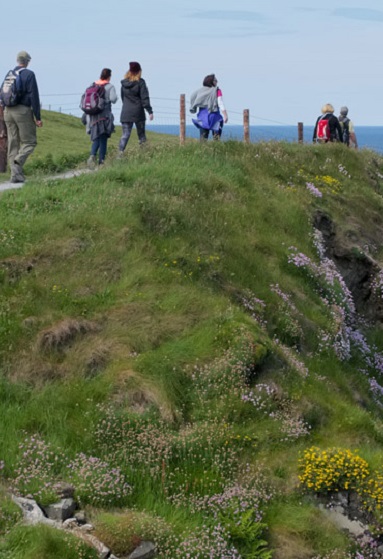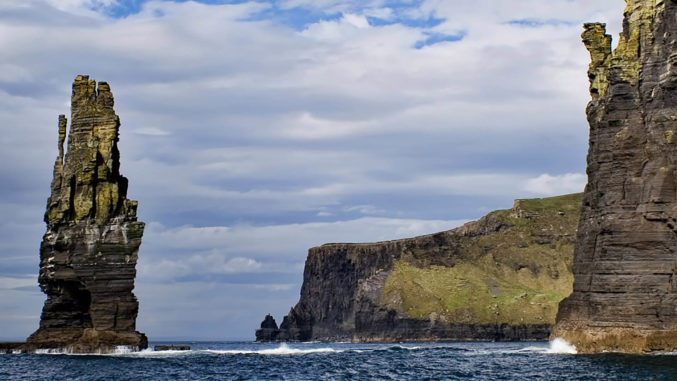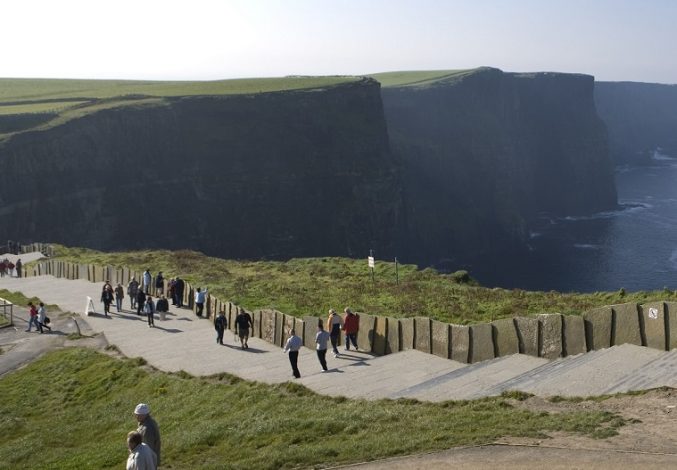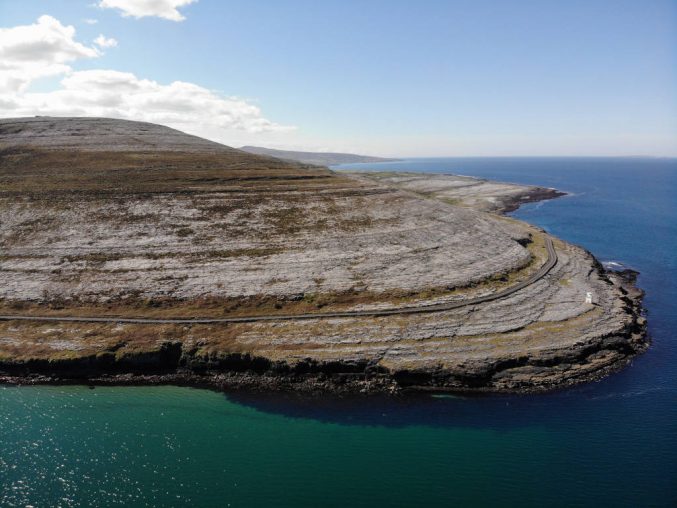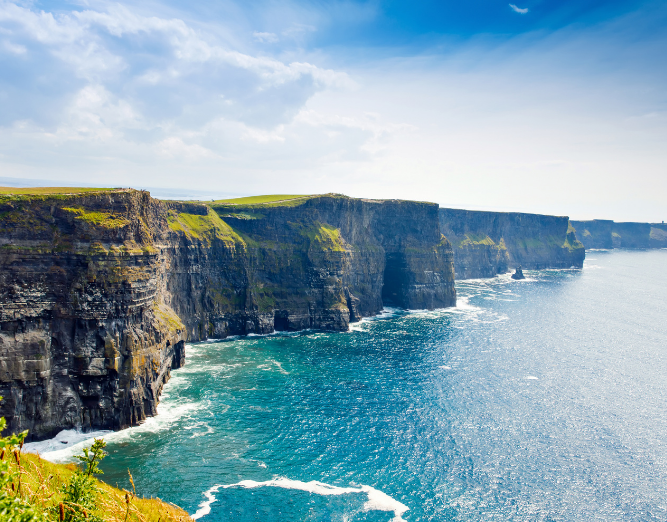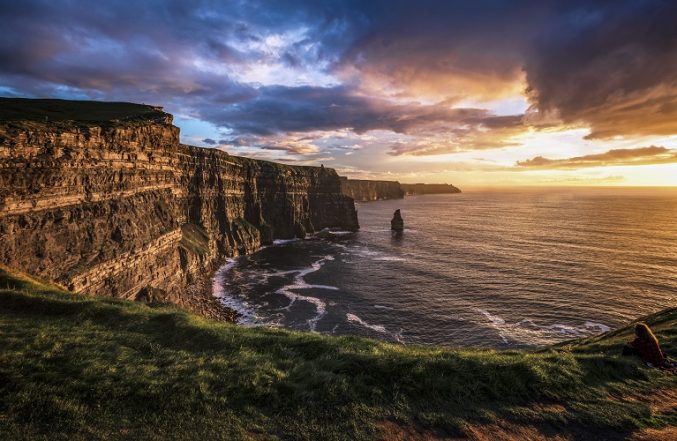How were the Cliffs formed?
Looking at the Cliffs of Moher you will notice individual horizontal layers of rock or strata. These layers are clearly defined bands of rock of different thickness and composition.
The lighter coloured layers that form narrow ledges are sandstone. The darker layers which make up most of the Cliffs are made of softer siltstone and shale. The sandstone ledges are slightly more resistant to erosion, however, they cannot support their own weight for long and eventually crash into the sea below.
Therefore, it is so important to stand well back from the edge of the Cliffs and do not venture out onto the ledges.
The layers are mud, silt, and sand that was carried into an ancient sea by large rivers that flowed from distant mountains that have been eroded.
